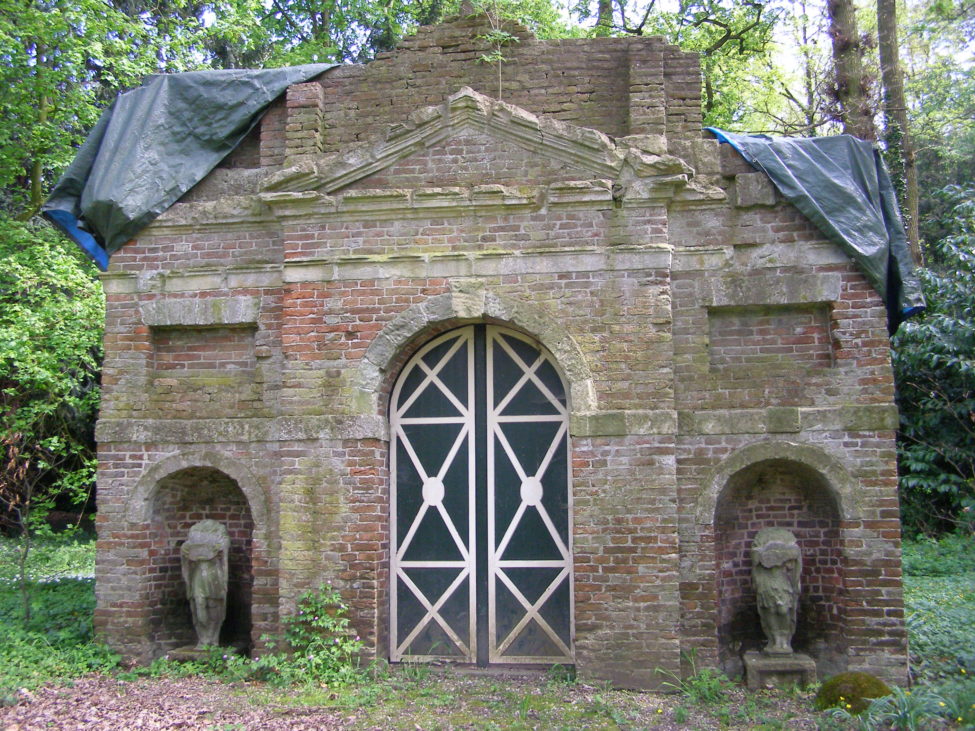‘op den donck gewerk aan de gabinet genaam Rouina’

The designer and builder of the ruin in the park of Huys ten Donck, near Ridderkerk, has been discovered. Two bills -which I found last week in the Rotterdam Municipal Archives, or Stadsarchief Rotterdam– reveal the identity of the architect as the Rotterdam-based Italian Giovanni (Jan) Giudici (1746-1819). The title of this post is a direct quote from one of these bills mentioning the work, in Dutch mixed with Italian influences.
That bill also leads to the conclusion that the ruin, now basically a screen of brick and stone, was originally covered in plaster when it was built in 1777.
This find adds at least one item to this architect’s portfolio, whose legacy was so hard hit by the 15 minute bombing of Rotterdam by German forces on May 14, 1940. This tragedy all but devastated the inner city, including what was left there of the architect’s work.
Luckily some of his work done outside that city can still be seen. We now know that part of his legacy is at Huys ten Donck near Ridderkerk. The house itself may contain more of his work, these same bills reveal. Architectural historians can chew on that piece of information.
The designer and builder of the ruin in the park of Huys ten Donck, near Ridderkerk, has been discovered. Two bills -which I found last week in the Rotterdam Municipal Archives, or Stadsarchief Rotterdam– reveal the identity of the architect as the Rotterdam-based Italian Giovanni (Jan) Giudici (1746-1819). The title of this post is a direct quote from one of these bills mentioning the work, in Dutch mixed with Italian influences.
That bill also leads to the conclusion that the ruin, now basically a screen of brick and stone, was originally covered in plaster when it was built in 1777.
This find adds at least one item to this architect’s portfolio, whose legacy was so hard hit by the 15 minute bombing of Rotterdam by German forces on May 14, 1940. This tragedy all but devastated the inner city, including what was left there of the architect’s work.
Luckily some of his work done outside that city can still be seen. We now know that part of his legacy is at Huys ten Donck near Ridderkerk. The house itself may contain more of his work, these same bills reveal. Architectural historians can chew on that piece of information.


